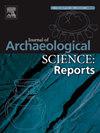瓜拉尼人在乌拉圭河上游的扩张。年代、殖民战略、社会影响和环境变化
IF 1.5
2区 历史学
0 ARCHAEOLOGY
引用次数: 0
摘要
瓜拉尼考古记录反映了古代亚马逊狩猎园艺家的物质文化和相关行为,他们从亚马孙西南部向拉普拉塔河扩张,引领了美洲哥伦布以前最重要的移民活动之一。本研究的重点是瓜拉尼人在南美洲东南部热带雨林中的乌拉圭河上游殖民地。我们利用专门为这项研究开发的地理和年代数据库,以及统计工具、花粉和从该地区的沉积物岩芯中提取的木炭记录,首次对瓜拉尼人在该河谷的殖民过程进行了全面分析,包括其对环境的影响以及对原有非瓜拉尼人口的影响。最初阶段为公元 770 年至 1000 年,这表明当时存在少量的始祖人群,他们留下了微弱的考古信号,其特点是在河谷沿岸建立了一些零星的定居点。随后,在公元前 1000 年至 1400 年期间,这些族群沿山谷逐渐扩大,导致了最初的环境影响,如新出现的森林砍伐过程、次生林典型物种的增加以及最早发现的玉米。公元 1400 年至 1600 年期间,瓜拉尼遗址的数量突然增加,这些遗址几乎沿 240 公里长的山谷连续分布,导致非瓜拉尼土著社会的迁移。在这一阶段,瓜拉尼人占据了整个落叶林地区,一直到乌拉圭河的上游,即卡诺阿 斯河和佩洛塔斯河的交汇处,在那里他们达到了其生态位的极限。在此期间,环境发生了重大变化,包括由于刀耕火种方式的加强而导致的森林大面积砍伐、玉米种植和其他可食用物种的增加,以及在受干扰的森林中更频繁地出现典型的开阔地物种。到公元 1600 年,随着葡萄牙和西班牙对该地区的殖民化,山谷中的人口大量减少,导致森林完全再生为次生林。本文章由计算机程序翻译,如有差异,请以英文原文为准。
The Guaraní expansion in the Upper Uruguay River. Chronology, colonization strategies, social impacts and environmental changes
The Guaraní archaeological record reflects the material culture and associated behaviors of ancient Amazonian forager-horticulturalists who expanded from southwestern Amazonia to the Río de la Plata River, leading one of the most significant pre-Columbian migrations in the Americas. This study focuses on the Guaraní colonization of the Upper Uruguay River, located within the tropical rainforests of southeastern South America. Utilizing a geographic and chronological database specifically developed for this research, along with statistical tools, pollen, and charcoal records from a sediment core recovered in the region, we present the first comprehensive analysis of the Guaraní colonization process in this valley, including its environmental impact and effects on pre-existing non-Guaraní populations.
The first evidence of Guaraní occupation in the Upper Uruguay River is dated between 773 and 880 CE, within a well-developed deciduous forest. This initial phase, extending between ∼ 770 and 1000 CE, indicates the presence of small founder populations that left a weak archaeological signal characterized by a few scattered settlements along the valley. Subsequently, between 1000 and 1400 CE, a gradual expansion of these groups is observed along the valley, leading to the first environmental impacts, such as an emerging deforestation process, an increase in species typical of secondary forests, and the earliest detection of Zea mays. Between ∼1400 and 1600 CE, there was a sudden increase in the number of Guaraní sites, which were distributed almost continuously along the 240 km of the valley, leading to the displacement of non-Guaraní indigenous societies. During this phase, the Guaraní population occupied the entire deciduous forest area up to the headwaters of the Uruguay River, at the confluence of the Canoas and Pelotas rivers, where they reached the limit of their ecological niche. During this period, significant environmental changes occurred, including widespread deforestation due to the intensification of slash-and-burn practices, an increase in maize cultivation and other edible species, and a greater frequency of species typical of open areas growing within disturbed forests. By 1600 CE, the valley experienced significant depopulation, coinciding with Portuguese and Spanish colonization of the region, leading to the full regeneration of the forest as a secondary forest.
求助全文
通过发布文献求助,成功后即可免费获取论文全文。
去求助
来源期刊

Journal of Archaeological Science-Reports
ARCHAEOLOGY-
CiteScore
3.10
自引率
12.50%
发文量
405
期刊介绍:
Journal of Archaeological Science: Reports is aimed at archaeologists and scientists engaged with the application of scientific techniques and methodologies to all areas of archaeology. The journal focuses on the results of the application of scientific methods to archaeological problems and debates. It will provide a forum for reviews and scientific debate of issues in scientific archaeology and their impact in the wider subject. Journal of Archaeological Science: Reports will publish papers of excellent archaeological science, with regional or wider interest. This will include case studies, reviews and short papers where an established scientific technique sheds light on archaeological questions and debates.
 求助内容:
求助内容: 应助结果提醒方式:
应助结果提醒方式:


